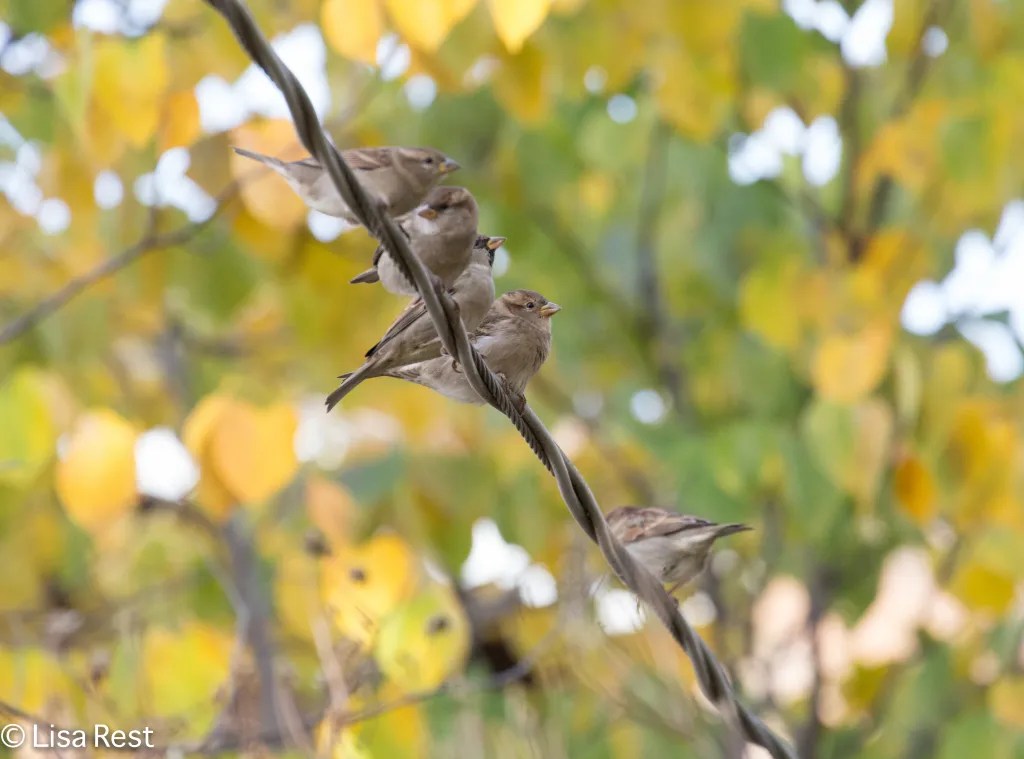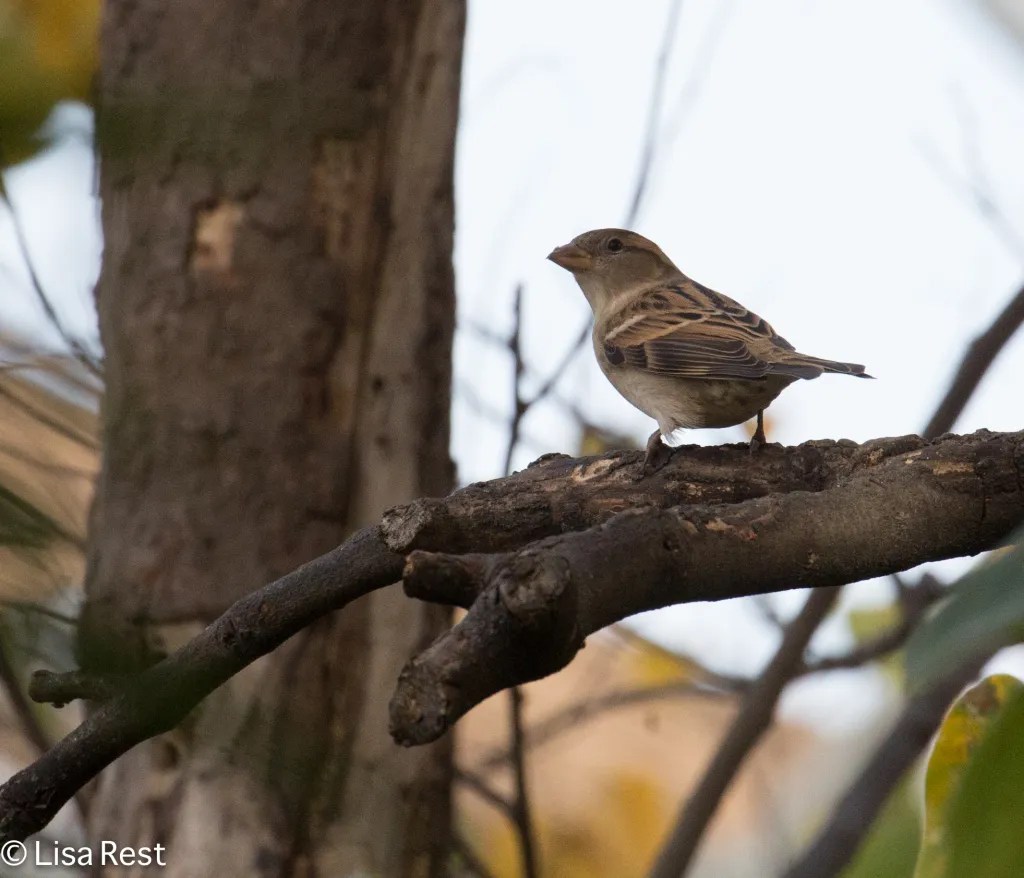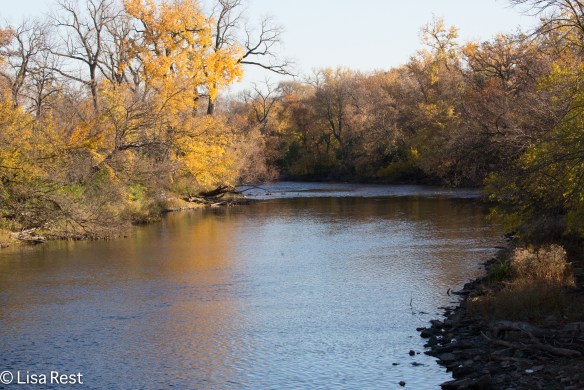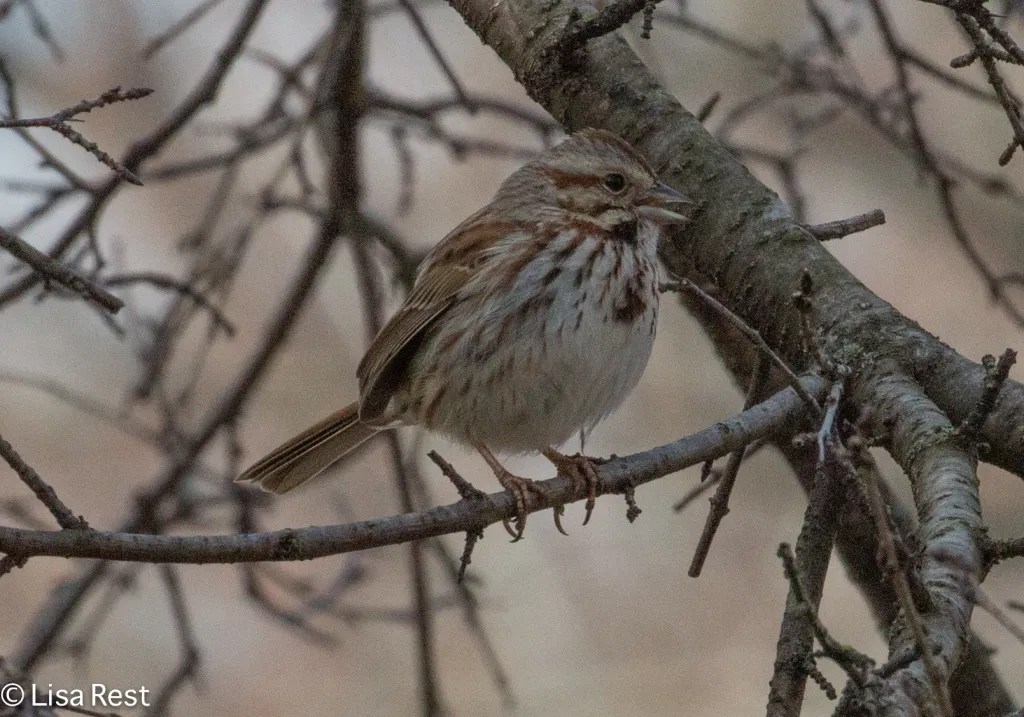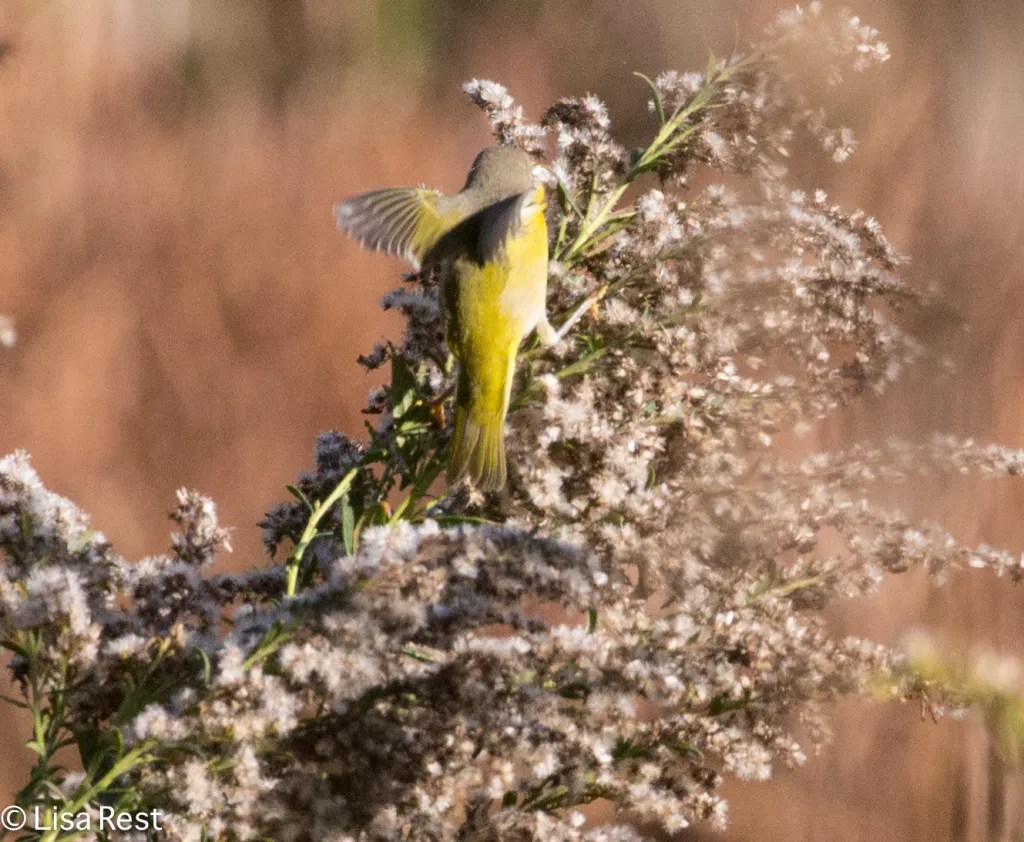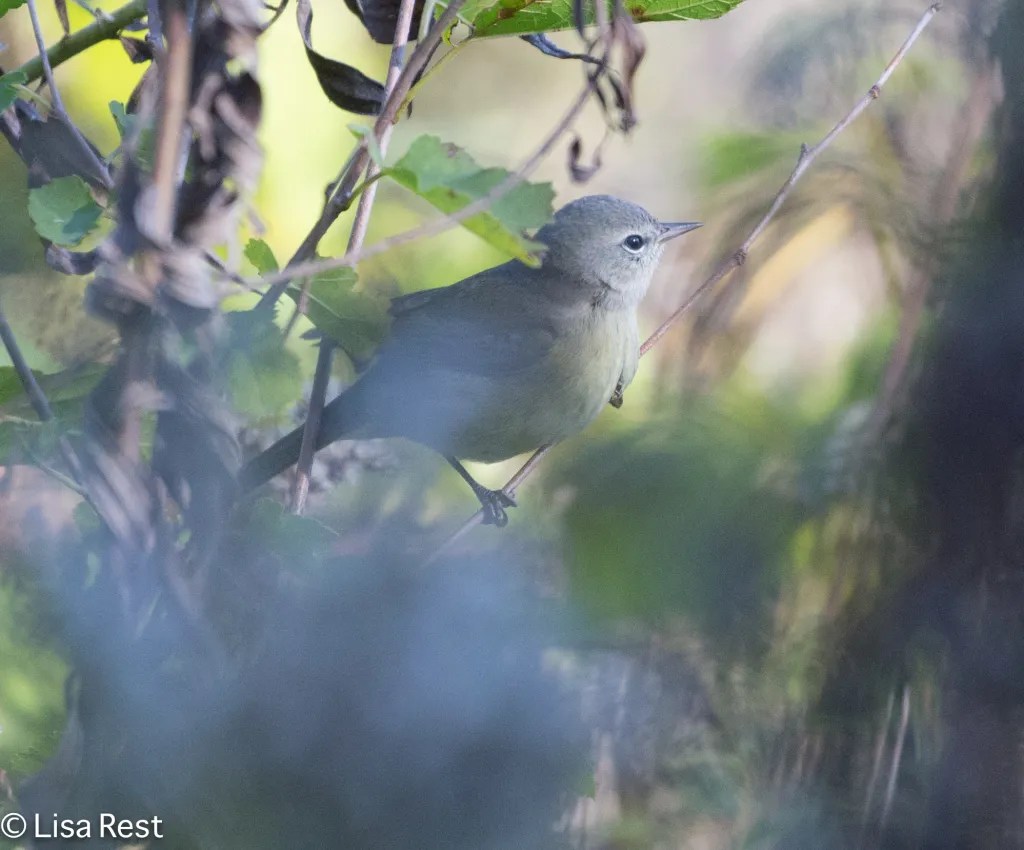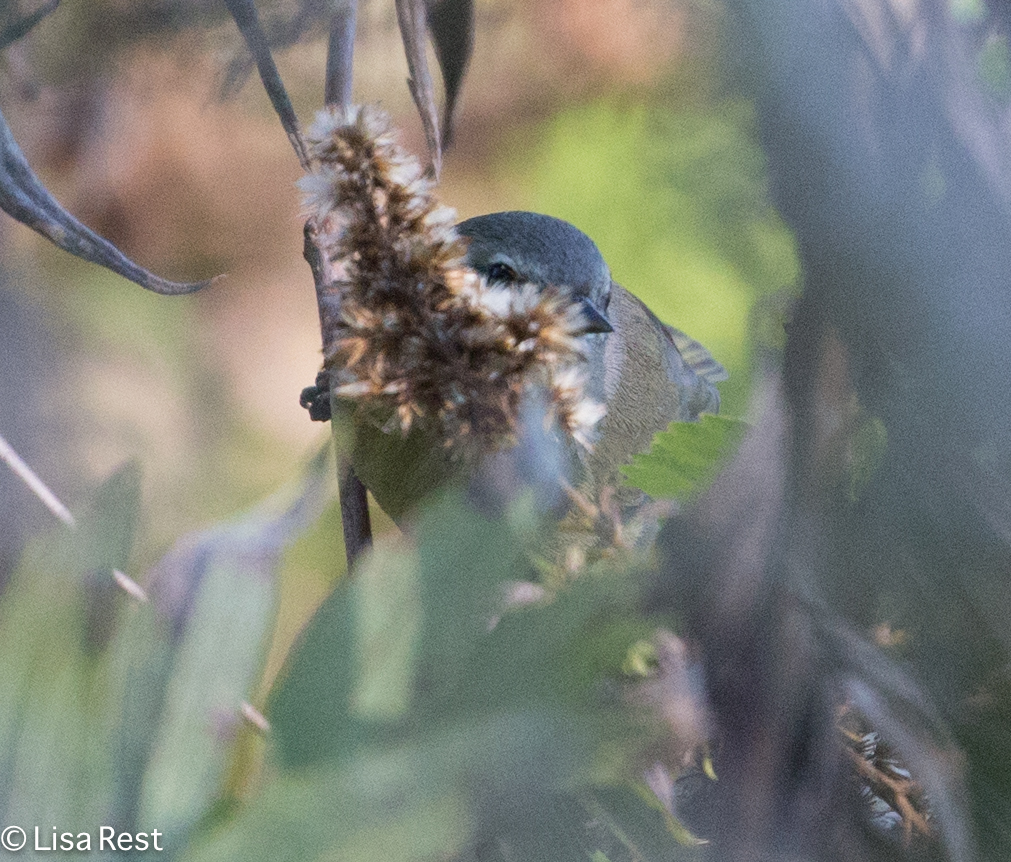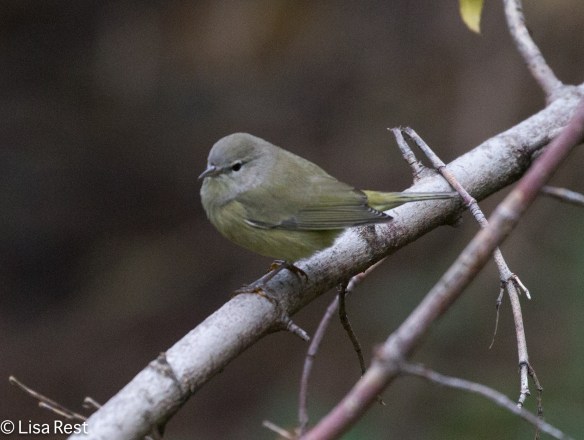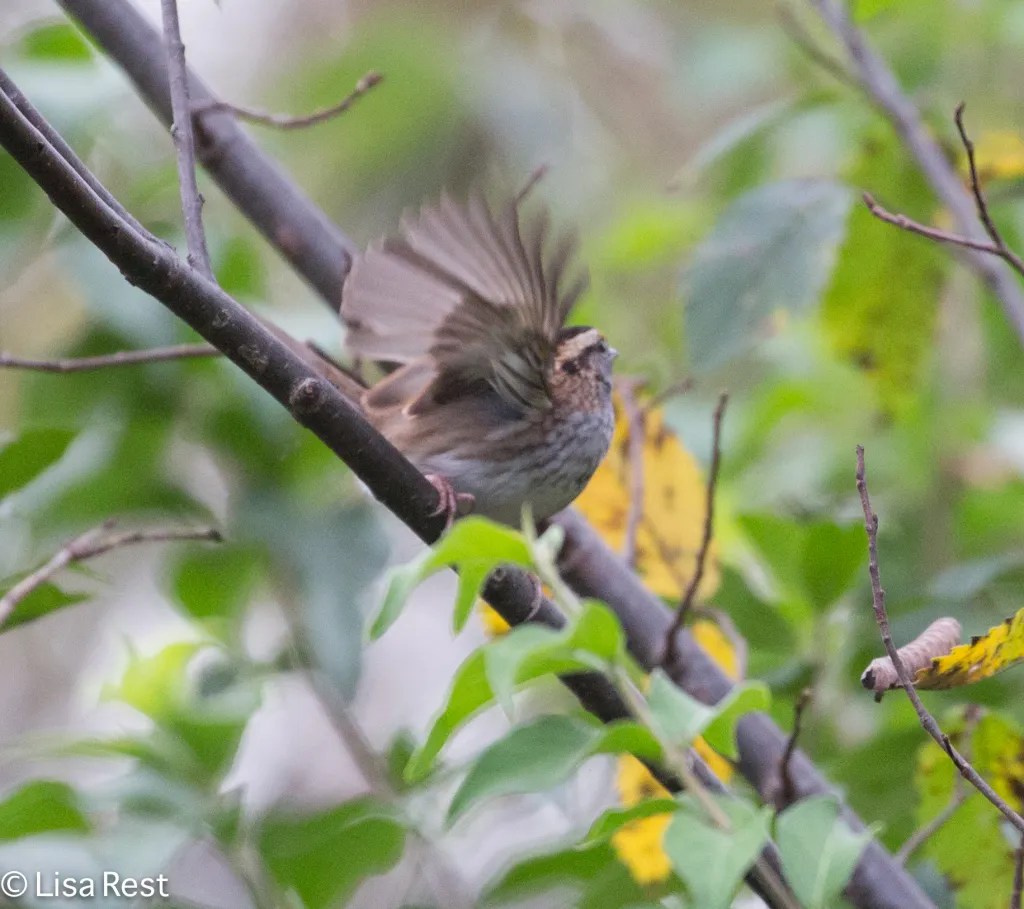
Tuesday morning at the Chicago Portage was so full of Tennessee Warblers, I simply have to celebrate them and the other birds we saw. Fall warbler migration is waning, sparrow species are moving in, and the leaves are turning and falling from the trees. Fall is on full-blast.
Somehow I’m not seeing so many Yellow-rumped Warblers lately.

Every once in a while an American Robin catches my eye and sits long enough for a photo.

White-crowned Sparrows have been here and there.

A while later I managed to get a distant photograph or two of a first-winter White-crowned Sparrow.
There were a couple Mourning Doves. No surprise, but they were enjoying the cloudless sky.


After that, I walked back a bit to meet Bob at the bridge near Harlem. When we walked the trail not too far past the bridge, we encountered a feeding frenzy of several Tennessee Warblers. The abundant sunshine lit up their green backs in the leaves.





So what were they eating? I think they were picking at the galls that cover the undersides of the hackberry leaves. I have found this to be an important and favorite food source for fall migrating warblers. It certainly makes me appreciate hackberry trees!

Not to be confused with the Tennessee Warblers were some young American Goldfinches like the one below, acquiring its adult plumage. The third photo is an adult.
Black-capped Chickadees were busy as usual.


This proved to be a good morning for Golden-crowned Kinglets.
We also had a few Ruby-crowned Kinglets.


Another late-fall warbler showing up is the Orange-crowned Warbler. Often mistaken for a Tennessee, it is yellower toward the tail underneath.




We observed an interesting-looking Red-winged Blackbird from the bridge near Harlem and decided its darker plumage designated it a young male bird.



After my Merlin app kept telling me for weeks that it heard Swamp Sparrows, we are finally starting to see them. They look more generally rufous in color and are grayer in the face than White-throated Sparrows.
The yellow lores and darker-brown plumage of White-throated Sparrows can be seen below, for comparison.
Here are a few more photos of another Tennessee Warbler.
There were more Swamp Sparrows and Orange-crowned Warblers this morning. I will try to be back soon with a quick update. Until then, here’s one more of the Golden-crowned Kinglet with its mouth open.

I’m adding a Cedar Waxwing for good measure.































